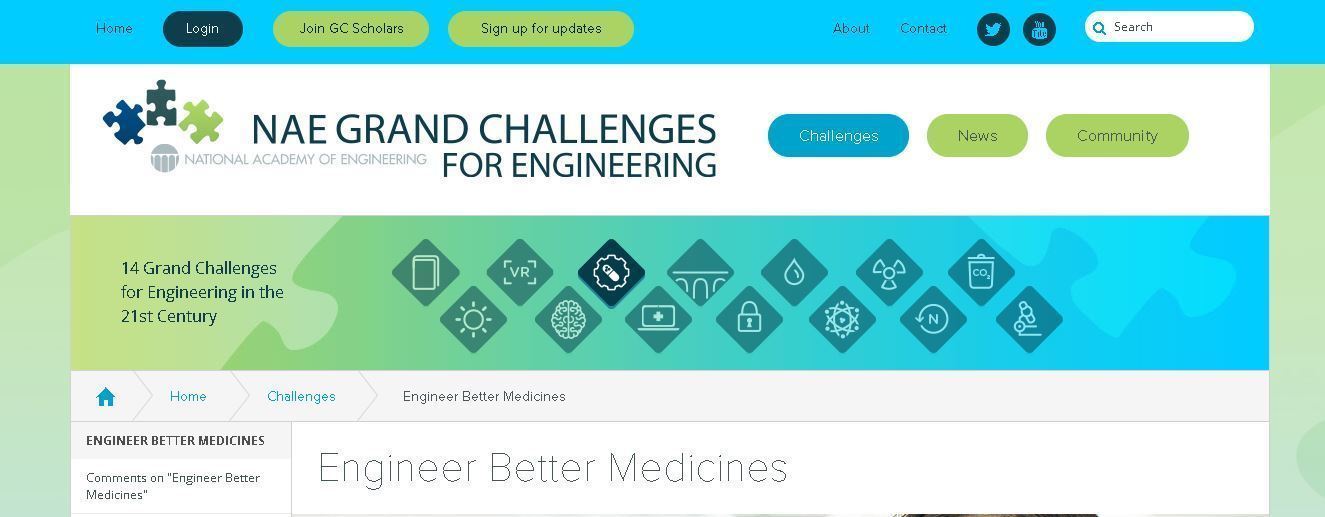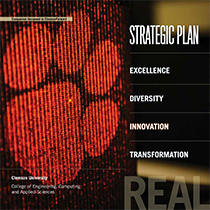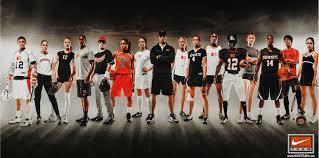- You are here:
- Home »
- Blog »
- Entrepreneurship & Business
Category Archives for Entrepreneurship & Business
What Robust Olympics Memories Do You Want?
“What robust Olympic memories do you want?” – Raj Gavurla
Robust Olympic Moments: https://www.theguardian.com/sport/series/50-stunning-olympic-moments
“The future belongs to those who believe in the beauty of their dreams.” ― Eleanor Roosevelt
“You can have it all. Just not all at once.” ― Oprah Winfrey
“Dare to live the life you have dreamed for yourself. Go forward and make your dreams come true.” ― Ralph Waldo Emerson
For programs and services, contact Raj Gavurla at 864.569.2315, raj@rajgavurla.com, LiiiVEN.
National Academy of Engineering: 14 Grand Challenges For Engineering
“Brain, heart, and muscle power. Not willpower.” – Raj Gavurla
“Everyone is smart. What do you want to study?” – Raj Gavurla
Which one of the NAE Grand Challenges For Engineering is most important to you? I selected two because one is essential to the other thirteen. Combined they have the greatest impact. They are Advance Personalized Learning and Engineer Better Medicines. Which ones do you want to fund?
Advance Personalized Learning
Make Solar Energy Economical
Enhance Virtual Reality
Reverse-Engineer The Brain
Engineer Better Medicines
Advance Health Informatics
Restore and Improve Urban Infrastructure
Secure Cyberspace
Provide Access To Clean Water
Provide Energy From Fusion
Prevent Nuclear Terror
Manage The Nitrogen Cycle
Develop Carbon Sequestration Methods
Engineer The Tools To Scientific Discovery
I selected Advance Personalized Learning because learning, its application, learn how to learn is the catalyst to transform performance, innovation, and/or entrepreneurial leadership and to live a robust life. I selected Engineer Better Medicines because of devastating side effects, allergic reactions, and to eschew medical hardship and emergency room visits.
Engineers are developing new systems to use genetic information, sense small changes in the body, assess new drugs, and deliver vaccines.
Doctors have long known that people differ in susceptibility to disease and response to medicines. But, with little guidance for understanding and adjusting to individual differences, treatments developed have generally been standardized for the many, rather than the few.
How will genetic science change how medicines are made? Click here to learn more: http://engineeringchallenges.org/9129.aspx
“The best way to predict the future is to create it.” – Raj Gavurla
For programs and services, contact Raj Gavurla at 864.569.2315, raj@rajgavurla.com, LiiiVEN.
Clemson University Celebrates Another Successful Year At Artisphere
Sometimes you need to praise people. Especially, the ones you learned or learn from. Take a look:
It’s a connection made possible by an app and website that students created as part of the university’s celebrated Creative Inquiry program and that will be shared with the public as Clemson’s STEAM Exhibit returns to Artisphere for a fourth year.
The bell-ringing will be among 17 activities geared for all ages that shine a light on how science, technology, engineering, arts and math complement each other. The public response to the exhibit in years past has been huge, with more than 75,000 visiting last year alone.
Some of this year’s activities are big hits returning for another run and several will be making their festival debut. Visitors can expect to venture into virtual reality worlds, play an underwater musical instrument and program robots to draw on paper.
One new activity will allow visitors to design an operating room in virtual reality while the audience observes their brainwave activity. Another will teach children about protecting the environment by having them make art out of recycled materials.
The STEAM Exhibit will be free and open to the public for the duration of the festival, which runs May 12-14.
The exhibit will be in the same place as the first three years: the corner of Main and Broad streets next to Grill Marks restaurant.
Here’s a list of activities scheduled for this year:
Color Booth
Experiment with the effects of colored light in this exhibit. Learn how theatrical lighting designers make informed decisions when picking color filters for lights on stage. Visitors can see and experiment with the effects of colored light on theater scenery and costumes and play a challenging guessing game.
EMAG!NE
The STEAM outreach network of the College of Engineering, Computing and Applied Sciences has developed hands-on activities for K-12 students, families and other festival-goers.
Big Data is All Around Us
Gummy bears and virtual reality will help illustrate how many data points a single person leaves in a year. Each gummy bear will represent a single data point, such as a phone call, credit transaction or a log-in. Visitors will also be asked questions about Greenville and their answers will be added to a live database illustrated in a diagram on a large screen. Small children can help build a visualization using chalk and a chalkboard and will receive a gummy bear with parental permission.
Recycled Art
This activity will help educate children about how they can turn trash into something useful. It will make them more familiar with recycling and teaches them about caring for the environment while triggering innovation.
Kinetic Energy Visualized IN Art (KEVIN)
Discover the visual delights of variable motion with these kinetic sculptures. This exhibit displays sculptures that use wind power, gravity, motors and strobe lights to provide unique visual effects.
Real-time Brain Response to Designing a Virtual Operating Room
This experience will allow the user to wear a head-mounted device that provides external input (virtual reality) and internal input (brain wave activity). The user will be able to move equipment in a virtual reality world to design an operating room while the audience observes the user’s brainwave activity in real time.
Playing Fraction Pies
Connect your knowledge of fractions and equivalency to musical notes and rhythms. Simply choose your fractions and press play. Your fractions will transform into a musical composition you can see and hear.
Small Bugs Making Big Waves: How Microbes Benefit Humankind
Despite being so small that they are invisible to our eyes, the microorganisms in our world have a big impact on our lives. This exhibit combines the art of microscopy and the viewing of these microbes with a connection to the daily application of the everyday things they provide. Come by for a live view under a microscope as well as past images of these mysterious creatures and examples of their hidden contributions to society.
Coding for the Carillon: Automating Clemson’s Bell Tower
Watch live video and audio feed from the top of Clemson’s iconic bell tower as songs play entirely automatically through a system implemented by a team of Clemson students in a Creative Inquiry project. Visitors can interact with the bells in real time through a virtual display and keyboard.
Science as Art 2017
Science as Art has challenged Clemson University students, faculty and staff, as well as pre-college students around the state, to share the powerful and inspiring visual images produced in laboratories, workspaces and learning environments. Science as Art aims to draw interest and understanding of science, technology, engineering and mathematics through visually captivating images that are described in basic terms.
The Magnificent Microcosm
If you have ever wondered what a butterfly mouth or a starfish looks like under a microscope, you will not want to miss “The Magnificent Microcosm” sponsored by the Clemson Light Imaging Facility. You will have the chance to look at samples under a microscope, see images from the “HOOKEd on Microscopy” contest and build your own hologram projector to use with a smartphone or tablet.
Drawing with Robots: R2D2 Meets Rembrandt
This exhibit is an interactive activity that introduces children and young adults to computing programing through art. They write the code for shape they wish to create and download it to a small Scribbler robot that then “draws” their picture.
Cutting, Folding, and Stacking: Turning Paper into Resilient Structures
In this hands-on exhibit, attendees will try to fold a piece of paper into a tessellated structure as a scaled model bridge and use precut pieces of cardboard to create a structurally sound mini chair. The purpose of this exhibit is to show that different geometric designs can affect the strength and stability of a structure.
Light flow
Did you know that optical technologies such as lasers and optical fibers are important for applications ranging from communications to health care? This interactive exhibit invites participants to learn more about these technologies from a highly visual and artistic perspective. Light Flow offers opportunities to manipulate laser light with water, send music from a mobile phone to a speaker with a laser beam and create your own colorful shapes using a special form of light-diffusing optical fiber.
Clemson Baja SAE
Clemson Baja is student-designed and -driven organization where participants challenge engineering principles by building a fully capable off-road vehicle.
Drawbot and Air Piston Musical Instrument
Use an iPad to control a Drawbot to create fun pictures from audio files. Come play a unique musical instrument using a rotating disk with specific hole sizes on it and pistons producing the air needed to make sound. Visitors can use the pistons to produce sounds and musical notes.
Biomimetics – Showcasing Nature through the Eyes of an Engineer
Come experience the power and creativity of Mother Nature, from a simple abalone shell to powerful synthetic shark jaws and prehensile seahorse tail marionette.
More about the exhibit:
The STEAM Exhibit is a collaboration of the College of Engineering, Computing and Applied Sciences and the College of Architecture, Arts and Humanities.
The chief organizers of the exhibit are Brad Putman, associate dean for undergraduate studies in the College of Engineering, Computing and Applied Sciences and Shannon Robert, associate professor of scene design in the College of Architecture, Arts and Humanities.
Richard Goodstein, dean of the College of Architecture, Arts and Humanities, said a dedicated group of faculty, students and staff have been working for months to ensure that this year’s exhibit is a success.
“Their efforts illustrate how imagination and creativity can bring together the STEAM disciplines,” he said. “Our collaborative efforts help position Clemson as a national leader in STEAM education.”
Anand Gramopadhye, dean of the College of Engineering, Computing and Applied Sciences said the exhibit serves as a reminder that engineering, computing and science are closely related to the arts and creativity.
“It also gives our students and faculty a place to showcase their work and provide a public service,” he said. “We have had a positive response in past years and are looking forward to another great festival.”
Also this year, Todd Anderson of Clemson University was chosen as one of Artisphere’s four jurors. The assistant professor of art and printmaking will be on the Jury Review Panel with Darin Gehrke, Mercedes Jelinek and Marilyn Zapf.
Kerry Murphy, executive director of Artisphere, said that Clemson’s contributions help enhance the festival.
“The STEAM exhibit is innovative, unique and well-received by festival-goers each year,” she said. “Clemson’s offerings are not only educational but also fun for adults and children alike. We are glad to have Clemson back at Artisphere in 2017.”
“Let go of the thoughts that don’t make you strong.” – Unknown
For programs and services, contact Raj Gavurla at 864.569.2315, raj@rajgavurla.com, LiiiVEN.
My Tennis Coach Came To A Match After A Month
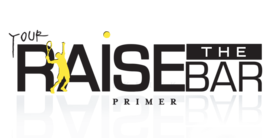
I was serving up 40 – love and double faulted. He said, “I hate double faults”. Then his narrative started. “Consistency.” “You’re up and down.” So, I had to make sure coach had been tracking my progress. I told him we haven’t lost a doubles match in three weeks. I asked, “have you been talking with people about my progress?” He smiled a little. Then, I showed coach me playing better tennis.
I asked him is he using his Your Raise The Bar Primer Mental Performance Tools workbook? I’m making sure he’s doing his mental performance skills homework. He didn’t say anything. Then, I hit a few more shots. One a one-handed backhand winner with an extended “ahh” added to relieve tension. Then, I hit another winner and coach wasn’t watching. Later in the match, I hit an overhead with an “ahh” and fist pump towards my partner to acknowledge our exceptional play. Then I served an ace and said “Coach” looking at him and he gave me a thumbs up.
I realize you probably have a tennis coach, however, by using my Your Raise The Bar Primer: Mental Performance Tools workbook you will be prepared when your coach checks on you. Coach knows about the technique of tennis (“how to hit the ball and positioning”). I missed a low volley and I asked my coach what I should do. He said, “footwork”.
Since I’m the mental performance skills coach, I know it wasn’t footwork. It was because I hit the low volley without a target. In other words, just getting it back. The problem is the ball didn’t know where to go to. Keep in mind my coach is a cabinet maker. I just call him “Coach” because it’s funner and he does act like my coach.
However, for real tennis coaching both tactical/technique/tennis management and private mental performance coaching visit http://www.rajgavurla.com/diamondforwardtennis.html. Our services and my workbook are available for purchase and you can contact me if you are a professional, college, academy or aspiring tennis player looking to raise the bar in your tennis performance. Whether you already have a coach and just want to boost your play with our services and products or you want us to chart your tennis career, contact me (performance consultant and coach) and I will coordinate with my partner who works on the tactical/technique/tennis management to highly customize the best package for you.
It’s a week later and I just finished playing tennis. Coach was there and asked “How are you?” in a way that meant, “I like what I’m seeing!” Coach seems more mature in his approach. I asked him again if he’s using my workbook. I saw a gleam in his eye meaning “yes”. We played doubles together and Coach was making fist pumps towards me. Wow! He also was praising his own shots. Coach is doing my workbook. His lens and physiology and ability to play better tennis are quite obvious. I’m looking forward to seeing coach’s practical forward mobility.
What’s The Difference Between Attending A Live Event & Watching A Video?
“You’re unique, different, and in leadership of your situation. Don’t compare yourself to anyone.” – Raj Gavurla
Have you attended an event in person and watched the same event on video? There’s a huge difference!
1. In person attendance, one actually senses, feels, and experiences the ambiance of the entire event. The featured speaker(s) message is more meaningful and engaging. You see things you don’t see watching a video. You participate in select activities and network (build relationships) with attendees (people you know and those you don’t know). Also, if you are fortunate you get to interact with the speaker(s) by asking questions or attending a private dinner the night before.
You might schedule other meetings during non-event time and see a new place or experience a magnificent place again. It also serves to get you out of the office and realize how everything is in some way interconnected. You broaden your business and life story.
2. When watching a video the value is greatly reduced. The meaning of what is being said can be distorted because the connection of being there in person isn’t there. If you think, how can that be? Then, video an interaction with you participating and then watch the video in private. You’ll see the differences and meaningfulness in value decrease.
There is a time for both. Determine which is of most value for your situation.
“Don’t let the noise of others’ opinions drown out your own inner voice.
Have the courage to follow your own heart and intuition. ” – Steve Jobs
For programs and services, contact Raj at 864.569.2315, raj@rajgavurla.com, LiiiVEN.
New Resource:
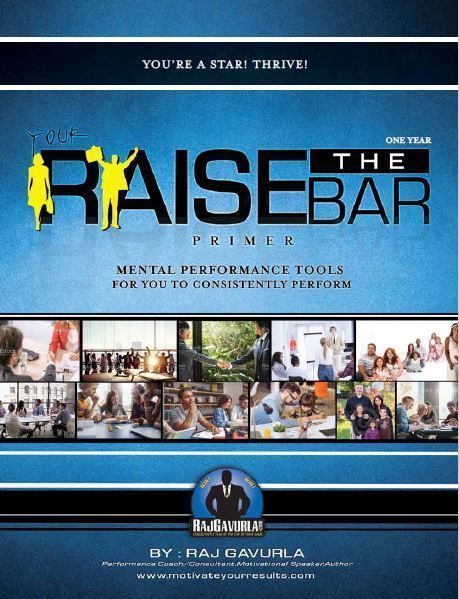
Consistently achieve your business goals, break-through performance barriers, and stay motivated and inspired with my mental performance coaching workbook.
Build and grow your mental performance skills using your own thoughts with a very simple mental structure. The workbook becomes customized by you with your own thoughts because your mental challenges are unique to your level of business and what’s happening in your life. You practice the knowledge skills of business. How about the mental performance skills to consistently learn how to perform in “the zone” (optimal performance) for success? Order Now! https://www.motivateyourresults.com
How To Win Playing Better Tennis?
“Win playing better tennis.” – Raj Gavurla
I really understood you had a tennis match after watching the NBA Playoffs last night. How did it go? My job is to performance consult and performance coach at the professional, college, academy, high school, and recreational levels. The main difference between them is better mental performance skills. Most of the pros know how to hit the ball. It’s bettering their mental performance skills to play better tennis they need to win more.
Yes, I also play tennis and I like playing with all levels because I approach each with a different frame of mind. All levels of players pose a different challenge to me. Recently, I’ve been playing with a group of recreational players. They see me warm up beforehand, bring my water, and my chair and watch me as I warm up and say “that’s what we need to do”. Yet, week after week they come out and just start playing. They warm up without practicing their volleys and overheads. It’s as if they are enthralled with the baseline although they are playing doubles. There is no serve and volley except me.
The wild thing is it is just as competitive as a Grand Slam Final with lesser mental performance skills and tennis skills. Since I can help their mental performance skills, I do and they’ve wised up and some take lessons on tennis technique (how to hit the ball better). They haven’t wised up yet to take mental performance coaching lessons.
While playing “my coach” (I call one of them that). He tells me to “play with better players” and is very hard to please. I can hit ten “nice” or “good” shots and he’ll point out the three I didn’t hit well. He compares me to professional players like Federer and Nadal. I’m honored by the comparison as he does know what he’s talking about when I’m not consistent or don’t move into the right position. He says, “I watch them on T.V. and at live tournaments”. Obviously, I’m not as robust of a tennis player as the pros.
Recently, we were closing out a match and he was telling me not to do this and that. I called a mental performance skills coaching timeout. I said, “all this negativity isn’t helping us”. How about saying, “finish the match” or “see the ball”. A week later we were in a similar situation, and he was encouraging and motivating and for a long period silent. After we won, he actually complimented me with “good”. Wow! Then he said “you need to win a Grand Slam”. I wish he was around sooner in my tennis life.
I gave him an autographed copy of my Your Raise The Bar Primer: Mental Performance Skills workbook. He looked at it and said “that takes commitment”. My response, you can stay at status quo and go through the motions week after week or have fun and win more. Which do you want? My coach has been working on it. I already see a difference in his ability on the court. If you need cabinets installed that’s my coach’s real job.
Yes, I do need to play with better players but I enjoy playing with all levels and at the recreational level I’m able to work on shots that I’m not able to do so against better-skilled players without first honing it. Some of the guys played in high school and one in college so it’s not as if they are beginners.
For those who still are working on technique, here are six videos to watch showing the legendary, Andre Agassi. I myself am hitting better volleys, overheads, and serves after watching. Remember, you also need to work on bettering your mental performance skills. The combination helps you win playing better tennis.
“Children are wonderfully confident in their own imaginations.
Most of us lose this confidence as we grow up.” – Sir Ken Robinson
For programs and services, contact Raj at 864.569.2315 or raj@rajgavurla.com, LiiiVEN.
Performance and Entrepreneurial Leadership In Management Needed for Mental Health In Your Workplace
“Win your better outcomes: High Value and Valued ROI” – Raj Gavurla
Your valued employee is missing work more often and you can tell some things aren’t making sense. As leadership and management, you think about what’s happening to them. Then, your office manager or human resource person informs you they gave them the Employee Assistant Program (EAP) phone number. Of course, something serious happened yet you’re still puzzled. However, because you don’t know what to do or policy you don’t initiate to share authentic dialogue with your valued subordinate.
Your subordinate doesn’t know what’s happening as all they think is I’ve been having very unusual thoughts and not feeling well. It’s as if the microprocessor (brain) in my computer (body) isn’t consistently functioning. They really don’t know when told they have a mental health diagnosis what that means. They just hope the doctor determines the right treatment to help/cure/exhibit teamwork to allow them to successfully continue working and living a robust life. Sometimes for a percentage of workers, this happens and they continue successfully working and living a robust life. Often times the facts are this doesn’t happen and your employee’s performance is valued for periods of time and then an episode or something happens and they miss work or they aren’t exhibiting their consistent valued performance. A mental health challenge doesn’t discriminate based on socioeconomic or sociodemographic status.
There is a highly customized fluid solution for your valued subordinate. An example is:
1. You (Boss) initiating and sharing private authentic dialogue with your employee. It takes research better outcomes, preparation, interaction, and communication to deliver better outcomes for your subordinate (employee).
2. Understanding what his or her treatment plan is and the teamwork needed.
3. Forming a “small individual/personal matters team/group” to help your subordinate by involving a select group of trained employees as this employee’s support system in your workplace.
4. Understanding the high-value importance/urgency of their family, work, and financial sustainability to your subordinate’s wellness is essential. Their family is experiencing similar uncertainty as you about the well-being of your employee.
5. By taking the initiative and being proactive with a process your employee becomes better and your costs tremendously decrease because your employee is still able to work although it might be scaled back and is given the review and evaluation of their work during this time to continue being a forward performing valued successful employee.
Yes, taking these steps are asking for more effort on your part as Boss and employer. However, the following are some of the better outcomes (results) from taking initiative:
1. I know as employer, Boss, team, and employee each is doing everything they can to see each other succeed and your clients succeed. As an employer, you don’t have to do the bare minimum to be in compliance. There are value-add resources that can help you. As a strong mental health advocate, performance consultant/coach, and entrepreneurial leadership expert, my services might be a value-add to your current protocol for this situation.
2. Donating to charity is important and I encourage you to continue doing so to make your business and community stronger. However, a lot of times companies donate to non-profits (a humanitarian cause/need) without knowing the person they are helping to receive support services. By allocating funds for mental health in your company, you are essentially creating “charity in the workplace” and seeing your dollars actually being put to use for your valued employee and receive quality work completed for your efforts.
3. The sensation of having this humanitarian lens is very fulfilling, highly satisfying, and delivers a win for all (your business and community). Businesses are here to contribute to family and societal progress. Being a humanitarian to me means more than “spiritual brothers and sisters have to eat”. Being a humanitarian means “spiritual brothers and sisters have to thrive”. We are very capable of this mission and aspiration being a reality because of the forward progress we consistently make in employer/employee relationships and societal progress.
4. Most likely your employee becomes more loyal and continues to make forward progress in your company. Also, you now have an employee with high-value empathy skills and is part of your succession planning for your “small personal matters team(s)/group(s). Although most of your employees don’t have a mental health diagnosis, they do have mental health challenges whether spurred from a workplace issue or life issue that sharing authentic dialogue with select people in a “small personal matters team/group” would greatly benefit your business.
5. Mental health is our current major employer/social health challenge to the robust viability of our workplace we have to triumph along with cancer (you could imagine this affects a person’s mental health).
6. I’ve heard too many personal stories of talented, skilled, and educated people who are underemployed and not doing meaningful work. Because of this, there might be relationship problems because of the stigma associated with mental health and the individual might lose hope.
Sports often is at the forefront of employer and societal progress. An example is Lebron James addressing the Cavaliers in the locker room, welcoming, and helping Larry Sanders (mental health challenge) join the team and continue to progress in his NBA career. Yes, there are a lot of small business owners who are also helping and supporting individuals with a mental health challenge. How about your Fortune 500, mid-size, or over 50 employees small business?
Remember, being a humanitarian is more than “spiritual brothers and sisters have to eat”. Being a humanitarian is “spiritual brothers and sisters have to thrive”. It’s a win for all. It’s worth it!
If you are an executive, in management, or are a workplace leader, who is challenged by mental health in your business, please contact me to share authentic dialogue. Your leadership is needed and wanted.
“One’s destination is never a place but rather a new way of looking at things.” Henry Miller
For programs and services, contact Raj at 864.569.2315, raj@rajgavurla.com, LiiiVEN.
You Don’t Need To Live A Double Life In Your Workplace
“You Don’t Need To Live A Double Life In Your Workplace.” – Raj Gavurla
Do you come to your job or the playing field leading a double life? You don’t need to. How is this possible? I’m there to work (complete tasks, etc.). That’s what they pay me to do. Years ago there was a job I inquired about with someone who worked for the company. He proceeded to tell me “you have to set up equipment”. I waited to see if he had more to say. He didn’t. I wasn’t interested in the job. Why? Because work is more to me than completing tasks (it’s part of the job) and receiving benefits. I understand you have family and friends outside of work you have fun, rewarding, and enjoyable camaraderie with. How about having fun, rewarding, and enjoyable camaraderie with your colleagues or teammates?
Camaraderie is one of the keys that keeps employees performing, retains, and recruits. It also plays a major role in wellness (well-being), motivation, inspiration, engagement, a positive attitude, leadership, and execution.
What’s a solution to nurture camaraderie in the workplace? By using a small group personal team matters approach. Do you have thousands, hundreds, less than fifty, ten to twenty, five or fewer employees or teammates? The larger the business, organization, or team the harder it is to have camaraderie with everyone. Regardless of size test the following:
Break up into “small personal teams”. A “small personal team” is a group that discusses (has dialogue) about personal matters not directly related to your job. For example, your family, what you’re doing this weekend, what you did this past weekend, your health, nutrition, fitness, your parents, kids aspirations, your non-work challenges, crisis, someone passing, accident, hobbies, movie, best place to get something, book you’re reading, mountains, sports, festivals, etc. Apply the learning.
A Customized Structure Might Look Like:
1. Ask people to participate sharing why. Do not require them to participate.
2. For those who join a personal matters team, make what’s discussed confidential. That doesn’t mean you can’t share your situation with someone outside of your group. Use your discretion.
3. Meet once a week for 45 minutes to an hour in a quiet place (conference room, courtyard, etc.)
4. Talk about and share personal matters important to each group member
5. Close the meeting
Use Metrics and Collect Data On The Outcomes:
Are employees mentally performing better?
Is employee retention increasing?
Is it easier to recruit?
What effect does it have on wellness (well-being), motivation, and inspiration?
What effect does it have on engagement, a positive attitude, leadership, and execution?
Small Personal Matters Team Examples:
Look at an amazing family
Look at a business team. One of the things employees, athletes, investors, donors, and philanthropists look at is the teamwork exhibited.
Look at our military. They have tremendous camaraderie protecting each other, to survive, and protect us. They know each other and have nicknames for each other making it easier to accomplish their mission.
Look at a sports team and you hear athletes talk about the camaraderie or if retired the camaraderie is what they miss.
I remember from reading Oscar Robertson’s biography he worked with people of a different skin color and they never had time for camaraderie. Just do the work because in those times that’s how it was. People didn’t know each other at work and never met outside of work with people of a different skin color. He said, “that hurt”. I’m sure some people of the other skin color had the same thought and feeling, “that hurt”. Thankfully, we the people have made tremendous cultural and societal progress.
Another example, I went to college to graduate/get an undergraduate degree in electrical engineering. That was the main goal. It’s the camaraderie with a few friends I remember and miss most. Although we don’t talk often or see each other as often I know, feel, sense, and believe we are connected forever.
My final example are my friends from Leadership Greenville. I shared with a small personal matters group my mom had a stroke. One told me his dad passed away from a stroke and another told me they had a family member who had a stroke and it’s a slow process. People get better. Until the emergency personnel told me your mom had a stroke, I’ve heard of the word stroke but knew nothing about it. Learning about a stroke and talking with my small personal matters team gave me lived experience insights I couldn’t get from a textbook that helped me to mentally perform to be a caregiver for my mom to make her well. She is talking better and she needs and wants to walk better and drive a car.
Implementing small personal matters teams in your businesses, organizations, and teams might transform the narratives, conversations, and outcomes. It should be helpful too and take pressure off and inhibit the performance anxiety your employees, team leaders, supervisors, managers, bosses, management, executives, and owners are experiencing. Yes, conventions, conferences, and special events are still needed and wanted for all your employees or sports team to participate in.
“A goal is not always meant to be reached, it often serves simply as something to aim at.”
– Bruce Lee
For programs and services, contact Raj at 864.569.2315, raj@rajgavurla.com
Win: A Sense of Respect Should Be Automatic, Not Earned
“A sense of respect should be automatic, not earned.” – Raj Gavurla
“If you set your goals ridiculously high and it’s a failure, you will fail above everyone else’s success.” – James Cameron
For programs and services, contact Raj at 864.569.2315, raj@rajgavurla.com
Preview Video: Transform Your Performance & Leadership
“Transform your performance and entrepreneurial leadership in business, work, sports, and life.”
– Raj Gavurla
“The way you tell your story to yourself matters.” Amy Cuddy
For programs and services, contact Raj at 864.569.2315, raj@rajgavurla.com
